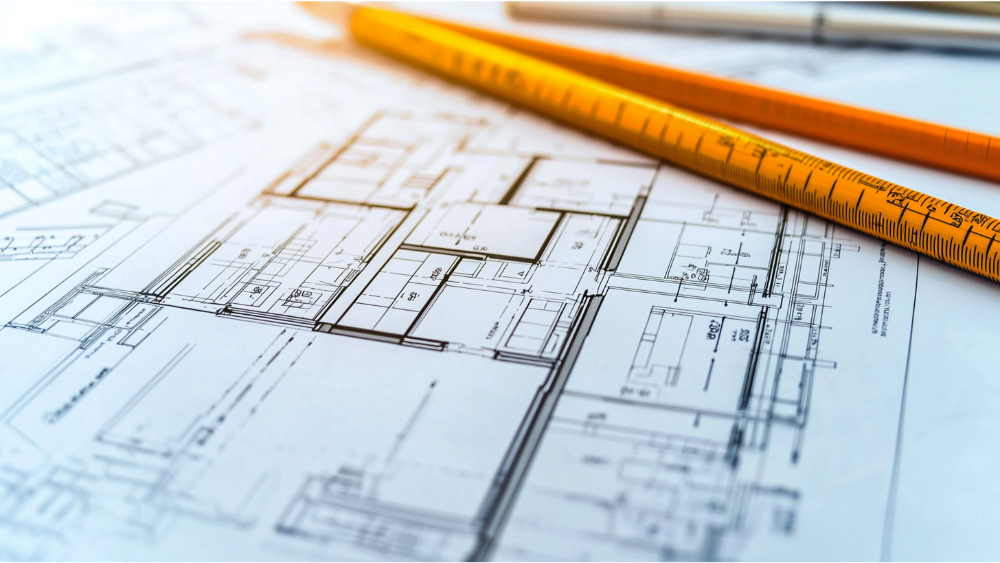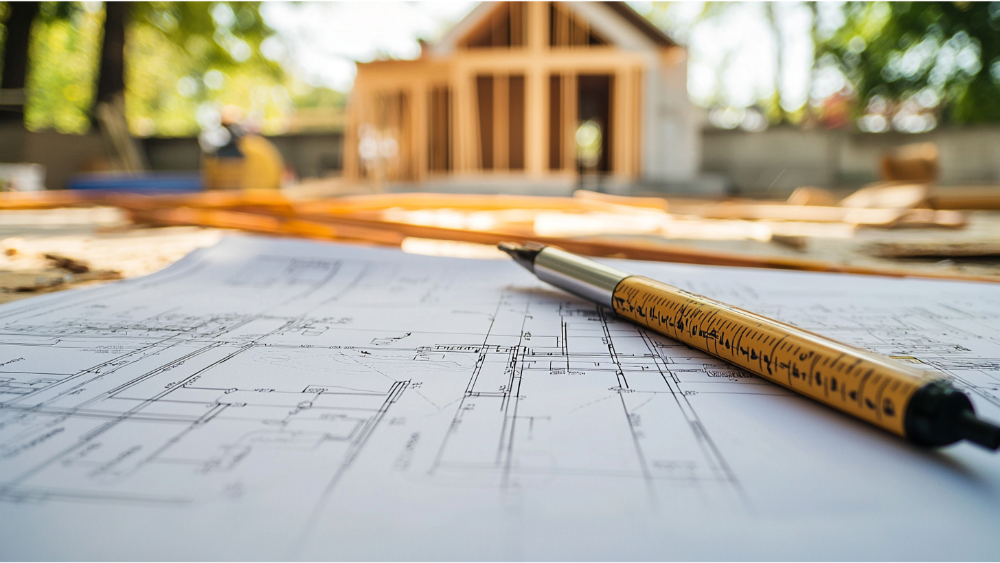Partnered with #1 ADU Builders
Contact Golden State
Drop us a line! We look forward to discussing your next project with you!
Cut the chase! Schedule a face-to-face virtual meeting with us today to dive into your project's next steps.
For our returning clients, experience our streamlined, contact-free project proposal process. Simply fill out our short project questionnaire, and we'll deliver your project proposal within 72 hours.

- Golden State Design & Engineering
- Comment 0
What Are MEP Plans in Construction?
MEP stands for Mechanical, Electrical, and Plumbing. MEP plans are architectural drawings that show how mechanical, electrical, and plumbing systems will be installed in a building or structure.
These plans are an essential part of all modern construction projects and provide detailed information on the layout, design, and installation of these systems.
Importance of MEP Plans
MEP plans are crucial to the success of construction projects for several reasons:
- Ensures efficient use of space: MEP plans help architects and engineers plan the placement of mechanical, electrical, and plumbing systems in a building. This helps maximize spatial efficiency and avoid conflicts between different systems.
- Ensures safety: Properly designed MEP plans ensure that all mechanical, electrical, and plumbing systems are installed correctly and meet safety regulations. This helps prevent accidents and potential hazards.
- Saves time and money: Detailed MEP plans help avoid design errors or conflicts during the construction phase, saving time and money on potential rework.
- Ensures sustainability: MEP plans also play a crucial role in promoting sustainable building practices by incorporating energy-efficient systems, reducing water usage, and minimizing environmental impact.
Components of MEP Plans

MEP plans typically include detailed drawings, specifications, schedules, calculations, and technical documentation for each system. The following are the main components of MEP plans:
Mechanical Plans
Mechanical plans show the layout and design of heating, ventilation, air conditioning (HVAC systems), and other mechanical systems. These plans include information on the placement of equipment, ductwork, piping, and control systems.
Electrical Plans
Electrical plans show the layout and design of electrical systems such as lighting, power distribution, communication, and security systems. These plans include details on electrical wiring diagrams, panel schedules, and circuitry.
Plumbing Plans
Plumbing plans depict the layout and design of plumbing systems, including water supply lines, drainage pipes, fixtures, and equipment. These plans also incorporate calculations for water pressure and flow rate.
Key Stakeholders Involved in MEP Plans
MEP planning involves a team effort from various stakeholders to ensure that all aspects are considered and integrated seamlessly. Some key stakeholders include:
- Architects: They work closely with engineers to incorporate MEP plans into the overall building design.
- Engineers: They are responsible for designing and calculating the specifications of mechanical, electrical, and plumbing systems.
- Contractors: They are in charge of implementing and installing the systems according to the MEP plans.
Process Of Drawing MEP Plans
Step 1: Understanding the Project Requirements
The process begins with a comprehensive understanding of the project’s scope and requirements. This involves gathering information from architects, engineers, and clients to define the objectives and functionalities of the building.
Factors such as the purpose of the building, budget constraints, and energy efficiency goals are critical at this stage. Collaboration ensures that MEP systems align with the overall design concept and the client’s expectations.
Step 2: Conducting Preliminary Assessments
Before designing begins, preliminary assessments of the site and existing conditions are conducted. This includes analyzing factors such as available utility connections, environmental considerations, and space constraints.
Engineers assess these architectural and structural elements to identify potential challenges and opportunities that might influence the MEP design.
Step 3: Drafting Conceptual Designs
Once the initial research is complete, engineers draft conceptual designs that outline the layout and key components of the MEP systems. During this phase, engineers focus on optimizing system placement to maximize efficiency and accessibility.
These preliminary designs often serve as the foundation for feedback and refinements from stakeholders.
Step 4: Creating Detailed MEP Plans
After finalizing the conceptual designs, detailed MEP plans are developed using advanced modeling software like CAD or BIM. These plans include precise measurements, material specifications, and system schematics.
Each system—mechanical, electrical, and plumbing—is carefully coordinated within the plans to avoid conflicts and ensure a seamless integration with other building systems.
Step 5: Reviewing and Approving the Plans
The detailed plans are then reviewed by clients, architects, and other stakeholders to ensure they meet the project’s requirements. Any necessary adjustments are made based on stakeholder input.
The plans are also evaluated for compliance with building codes, safety standards, and sustainability guidelines.
Step 6: Implementation and Monitoring
Once the plans are approved, contractors start implementing the MEP systems according to the specified designs. Engineers and project managers are involved in supervising the installation process to ensure accuracy and quality.
Regular inspections and tests are carried out to verify that the systems function as intended and meet performance standards.
Step 7: Final Testing and Commissioning
The final step involves thorough testing and commissioning of all MEP systems. This ensures that the systems are operational, efficient, and safe for use. Any remaining issues or adjustments are addressed during this stage.
Once the testing is complete, the project is handed over to the client along with detailed documentation for future reference and maintenance.
Get MEP Plans From Golden State Design & Engineering

At Golden State Design & Engineering, we take pride in being Northern California’s premier provider of MEP design and engineering solutions.
Our team combines technical expertise with a deep understanding of local building regulations and sustainability practices to deliver construction projects that exceed expectations.
Whether it’s for residential, commercial, or industrial developments, our tailored approach ensures that each project is designed with precision and aligns with our client’s vision.
Efficiency and innovation are at the core of everything we do. By utilizing cutting-edge technology and advanced engineering practices, our firm ensures that every system we design enhances performance, reduces energy consumption, and adheres to safety and environmental standards.
From initial planning to final commissioning, we remain committed to providing seamless coordination and dedicated support throughout every stage of your project.
Partner with Golden State Design & Engineering today and experience the difference that expert MEP design and engineering can make for your development.
Contact us now to schedule a consultation or to learn more about our comprehensive range of services. Together, we can bring your project to life with elements like indoor air quality, renewable energy integration, sustainability, and reliability at its foundation.
Frequently Asked What Are MEP Plans Questions

What is a MEP plan in construction?
An MEP plan in construction refers to the detailed design and coordination of Mechanical, Electrical, and Plumbing systems within a building project.
These plans are essential for ensuring that the critical infrastructure of a building is designed efficiently, effectively, and in compliance with applicable codes and regulations.
Mechanical systems typically include HVAC systems (Heating, Ventilation, and Air Conditioning) systems which manage climate control, airflow, and comfort within a building.
Electrical systems focus on the distribution of power, lighting, fire alarms, and any supplementary systems like communication networks and security setups.
Plumbing involves the piping infrastructure needed for water supply, drainage, waste management, and sometimes specialized systems like gas delivery in laboratory or industrial settings.
What are MEP drawings?
MEP drawings are detailed diagrams and plans that outline the placement and specifications of Mechanical, Electrical, and Plumbing systems.
These drawings provide a visual representation of each system within the larger building design and help engineers, architects, contractors, and other stakeholders understand the intricacies and coordination aspects of these crucial building components.
What is the basic MEP plan?
The basic MEP plan outlines the essential systems and components necessary for a building’s operation, including HVAC equipment , electrical, and plumbing.
It provides a general overview of the layout and function of these systems within the building while also considering factors such as energy efficiency, safety, and sustainability.
Detailed construction MEP plans are then created based on this basic plan to ensure precise specifications and coordination during construction.
What does MEP stand for?
MEP stands for Mechanical, Electrical, and Plumbing. These three systems are crucial components of any building and require detailed design and coordination to ensure functionality, safety, and efficiency.
Conclusion
At Golden State Design & Engineering, we understand the importance of delivering precise and reliable MEP solutions tailored to the unique needs of every project. Our team of experienced professionals is dedicated to providing innovative designs that emphasize energy efficiency, safety, and sustainability.
By leveraging cutting-edge technologies and industry best practices, we ensure that each system—mechanical, electrical, and plumbing—works seamlessly together to create functional, high-performance buildings.
Our commitment to excellence allows us to meet and exceed the expectations of our clients, no matter the complexity or scale of the project.
If you’re ready to take your project to the next level, Golden State Design & Engineering is here to help. Our experts will partner with you to develop comprehensive MEP plans designed with precision, cost savings, and efficiency in mind.
Contact us today to get started on crafting a safe, sustainable, and thoroughly efficient foundation for your building. Together, let’s bring your vision to life!
#NAICS’s:
- 541310 Architectural Services &
- 541330 Engineering Services
DUNS NO:
- 119132267
#SIC’s
- 8712 Architectural Services &
- 8711 Engineering Services
Cage #
- 9R4L5
#UNSPSC’s:
- 81101500, 81101502, 81101505, 81101508, 81101526, 81101533, 81101522

